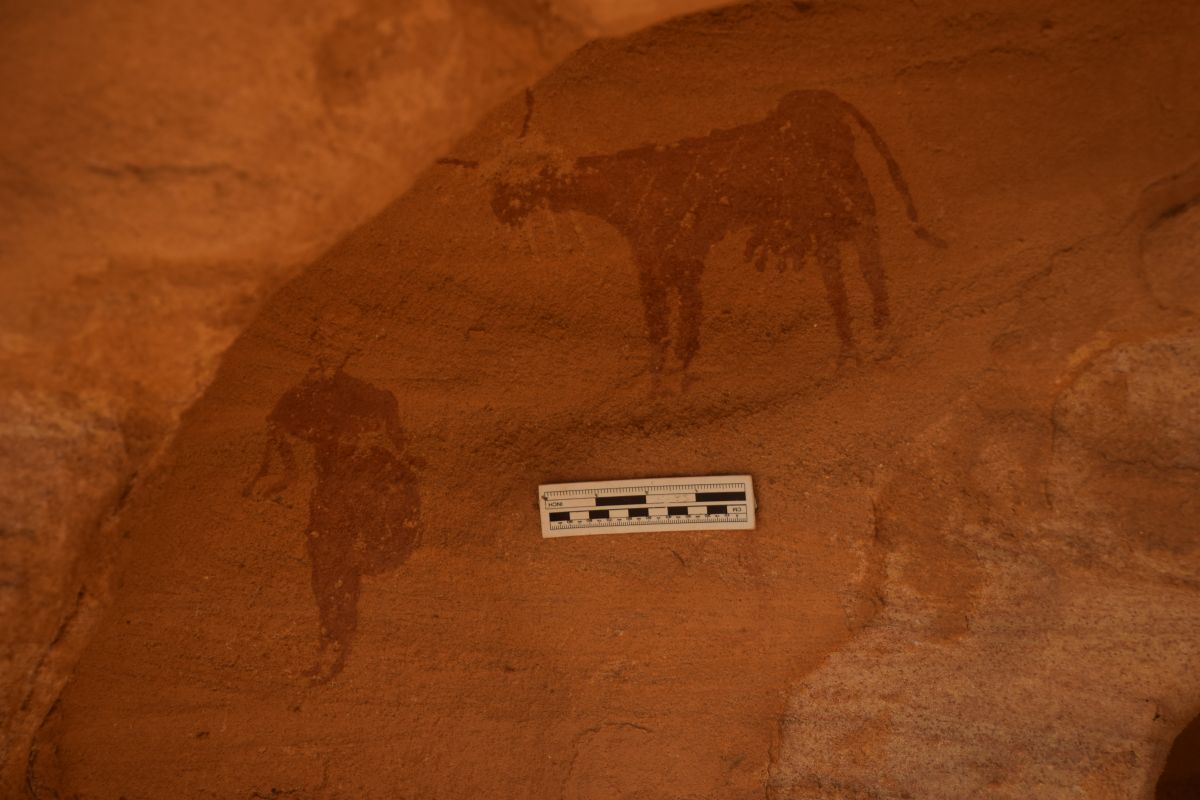5,000 Year Old Rock Art

Geologists have long known that over 5,000 years ago, the Sahara Desert was a lush grassland. Recent evidence from Sudan supports this, with rock art from 2018 showing cattle herders and boats.
In the eastern Sahara’s Atbai region, where rain hasn’t supported cattle for millennia, rock carvings depict six boats on a cave wall, 90 miles from the nearest Nile branch. The boats are arranged like a fleet, emerging from a tunnel entrance.
The carvings are unusual due to their simplicity, suggesting they were made by common people rather than officials. Julien Cooper, an archaeologist at Macquarie University, noted the cattle drawings indicate a strong connection to cattle, which can’t survive in today’s hyper-arid desert.
Pottery found near the petroglyphs dates the carvings to the fourth millennium BCE. As the Atbai became more arid around 5,000 years ago, the authors propose that the carvers were Neolithic Nubians, possibly early gold prospectors, due to golden items found in burials from that era.
The authors suggest that pastoralists may have found periodic grasslands and water in the desert, similar to regions in the Western Desert that received African monsoons. The detailed depiction of a cow’s udder in the rock art indicates that milking was vital, requiring ample forage. This implies the carvers were part of a pastoral tradition from wetter climates or periods.
The study concludes that these carvers represent the last remnants of an ancient nomadic pastoralism that existed before the region dried to its current state.